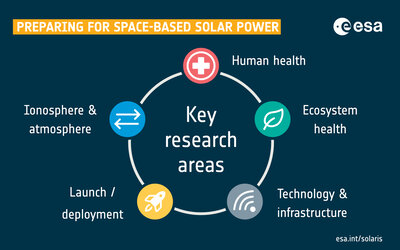
Agency
Determining ESA's environmental impact
The idea that if you cannot measure something you cannot improve it holds especially true in the world of greenhouse gas emissions. As ESA commits to shrinking its environmental impact, the question arises: Where do we direct our efforts, and how do we gauge success?
ESA plans to reduce the environmental footprint of its operations by 2030 by 46% for its operational activities and by 28% for the activities executed by its suppliers. These goals are relative to a 2019 baseline that was established in accordance with the GHG Protocol Standard, an internationally recognised standard for carbon accounting at organisational level. Watch this video to learn more.






